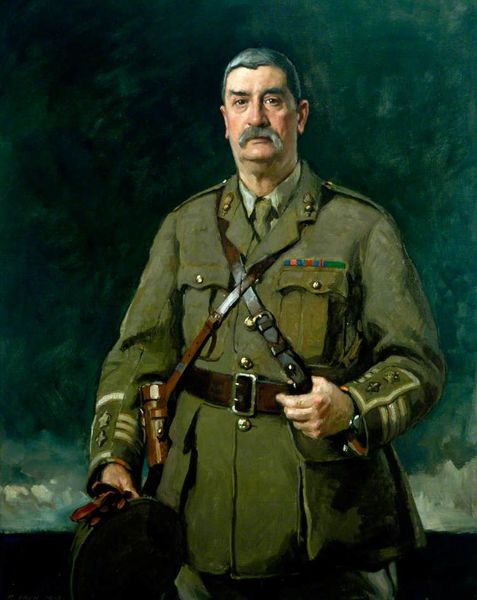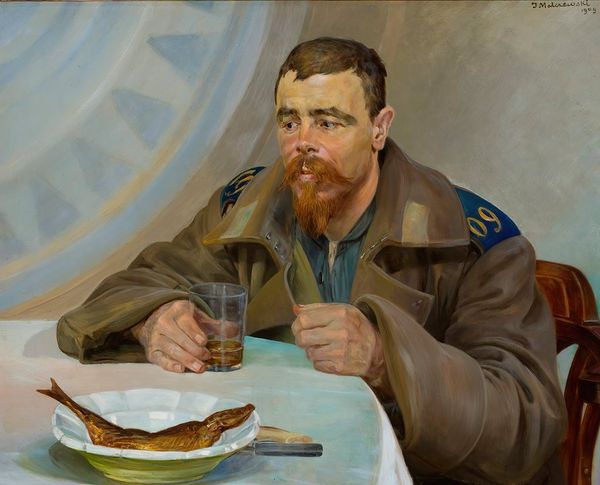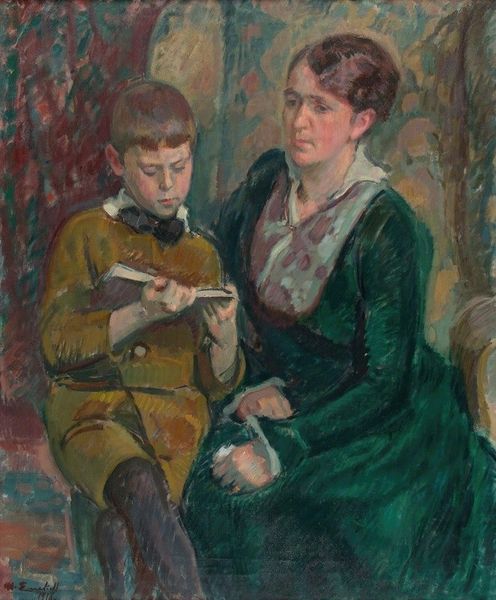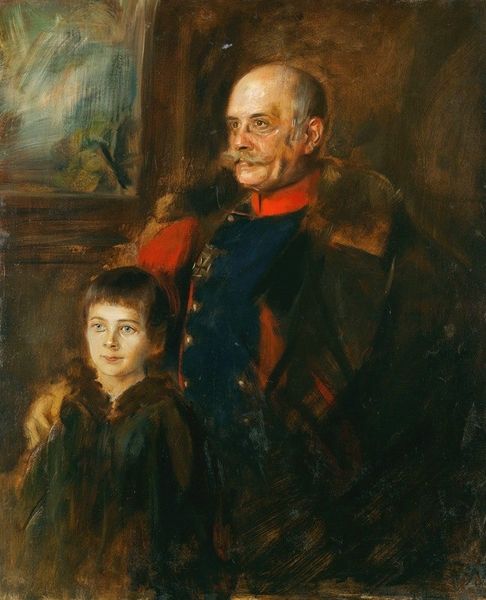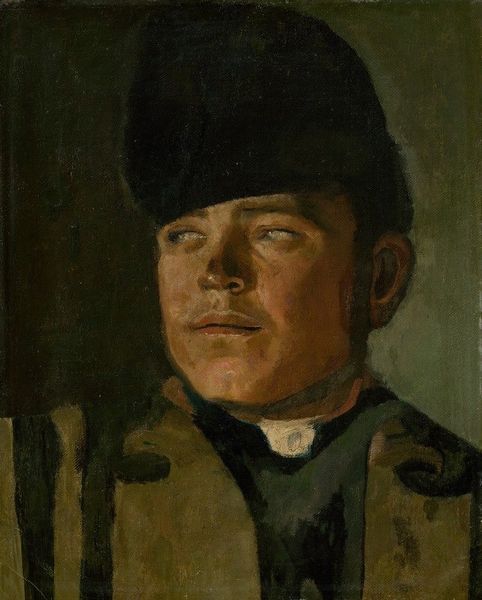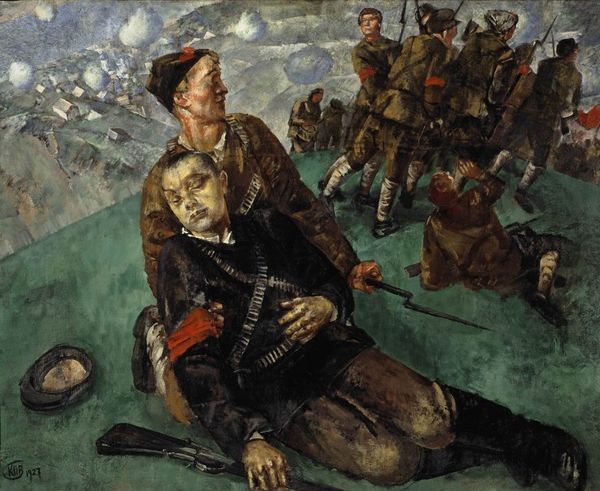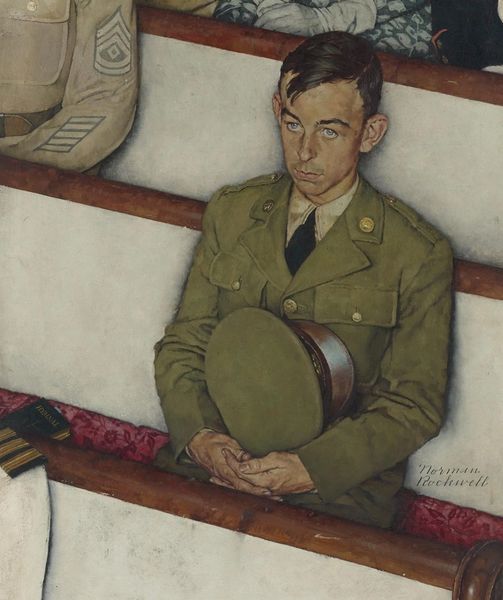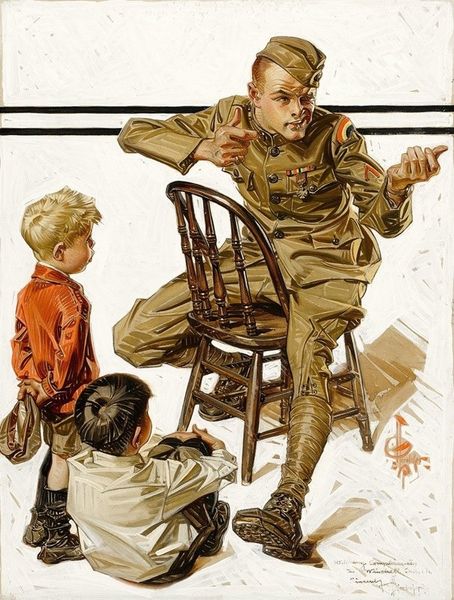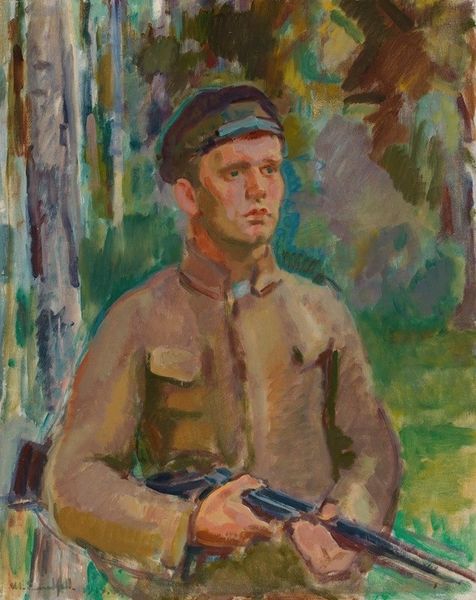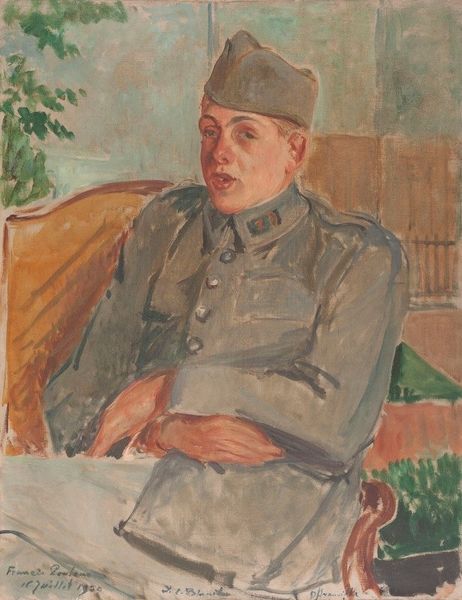
oil-paint
#
portrait
#
oil-paint
#
socialist-realism
#
figuration
#
oil painting
#
genre-painting
#
realism
Dimensions: 158 x 131.5 cm
Copyright: Pyotr Konchalovsky,Fair Use
Curator: Here we have Pyotr Konchalovsky's 1943 oil painting, "Portrait of Sergei Vladimirovich Mikhalkov with his son." Editor: It has such a somber feeling, doesn’t it? The colors are muted, and there's a real stillness in both figures, even though the brushstrokes themselves seem quite energetic. Curator: Well, consider the historical moment. 1943. This was deep in the throes of World War II. Konchalovsky, though not a soldier himself, was very much working within the context of socialist realism, aiming to depict figures in ways that resonated with the values of Soviet society. Mikhalkov, as a prominent writer, would have been seen as a vital figure in maintaining morale and shaping the narrative. Editor: Right, but it's the materiality of that uniform that fascinates me. You can almost feel the weight of the fabric and see the precision of the tailoring. It speaks volumes about the status and authority Mikhalkov embodies, while also reminding us of the practicalities of war – the cloth woven, the buttons attached, the labor involved in creating even an officer’s dress uniform. Curator: Indeed. And the portrait, while seemingly intimate, also serves a public function. This image of Mikhalkov as a father, even amidst the war, humanizes him, reinforces family values, and underscores the future the Soviets are fighting for. The choice of oil paints also solidifies its permanence. Editor: That's a good point about permanence. The oil medium allows for layering and blending, which gives a tactile quality to the surface – not unlike the layers of experience Mikhalkov himself must be navigating. Look at how Konchalovsky handles the light on the son's face. Curator: He captures the vulnerability of childhood, certainly. In its display and circulation, I am sure this portrait was an important tool in solidifying faith during conflict. Editor: The quiet details of this work resonate on many levels once you start thinking about how everything came together – not just aesthetically, but socially, industrially, and politically. Curator: Precisely, considering it's more than just pigments on canvas; it’s a statement about a nation and its ideals during a crucible moment in history.
Comments
No comments
Be the first to comment and join the conversation on the ultimate creative platform.
